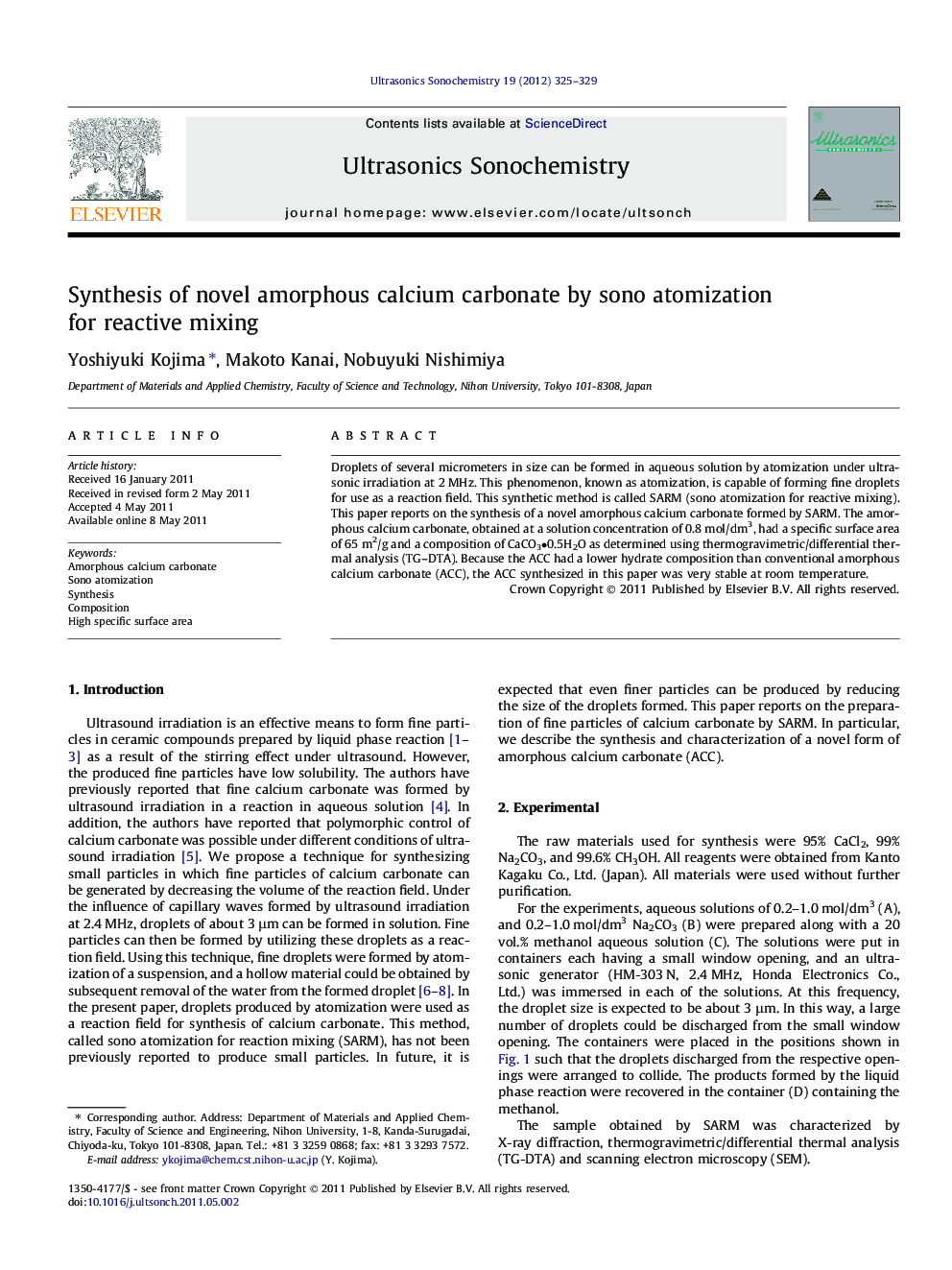| Article ID | Journal | Published Year | Pages | File Type |
|---|---|---|---|---|
| 1265467 | Ultrasonics Sonochemistry | 2012 | 5 Pages |
Droplets of several micrometers in size can be formed in aqueous solution by atomization under ultrasonic irradiation at 2 MHz. This phenomenon, known as atomization, is capable of forming fine droplets for use as a reaction field. This synthetic method is called SARM (sono atomization for reactive mixing). This paper reports on the synthesis of a novel amorphous calcium carbonate formed by SARM. The amorphous calcium carbonate, obtained at a solution concentration of 0.8 mol/dm3, had a specific surface area of 65 m2/g and a composition of CaCO3•0.5H2O as determined using thermogravimetric/differential thermal analysis (TG–DTA). Because the ACC had a lower hydrate composition than conventional amorphous calcium carbonate (ACC), the ACC synthesized in this paper was very stable at room temperature.
► This paper reports on the synthesis of amorphous calcium carbonate (ACC) by SARM (sono atomization for reactive mixing). ► The ACC had a specific surface area of 65 m2/g and a composition of CaCO3•0.5H2O. ► The ACC synthesized in this paper was very stable at room temperature.
